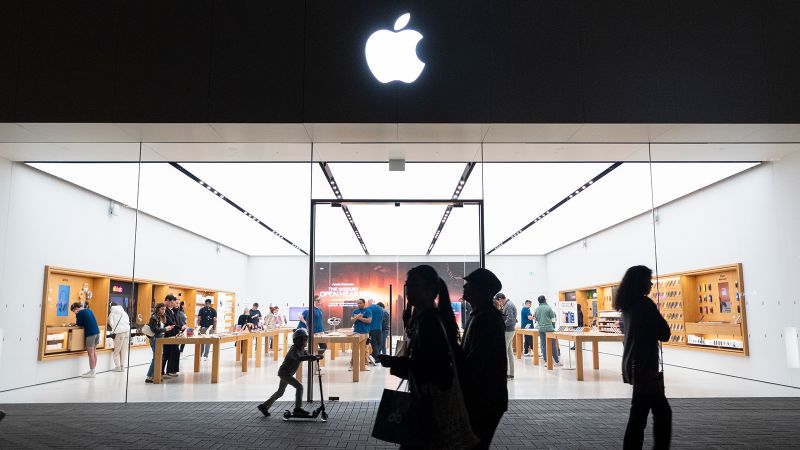U.S. President Donald Trump has emphatically proclaimed that “jobs and factories will come roaring back” to the United States during an event dubbed “Liberation Day.” This statement came in conjunction with the implementation of sweeping tariffs that affect global trade dynamics. The president’s administration believes that these tariffs, which are imposed on a wide variety of imported goods, will revitalize American manufacturing. However, this bold assertion has drawn considerable skepticism from various economic analysts and industry experts who question the practicality of such a manufacturing resurgence.
As the new tariffs take effect, there are significant concerns regarding the potential price surge of consumer goods. For instance, a leading technology analyst recently raised alarms about the potential skyrocketing cost of an Apple iPhone, suggesting that if the devices were manufactured domestically, their price could escalate to approximately $3,500—a threefold increase compared to the current average price of about $1,000. This projection highlights the financial burden that could fall on American consumers, various sectors of the economy, and businesses relying on imported products.
The Trump administration has asserted that these tariffs will result in the “reshoring” of manufacturing jobs, which they argue will lead to the creation of millions of American employment opportunities. However, Dan Ives, the global head of technology research at Wedbush Securities, has characterized this narrative as a “fictional tale.” He emphasizes that, in order to establish a domestic supply chain capable of producing iPhones, the United States would need to invest significantly and replicate the complex production ecosystem currently found in Asia. These sentiments underscore a range of challenges that American manufacturers would face should they attempt to move production stateside.
The complications do not just rest with the iPhone. The establishment of high-tech manufacturing facilities, or fabrication plants, in states like West Virginia and New Jersey would incur substantial costs and time investments. According to Ives, Apple would require upwards of $30 billion and approximately three years to initiate a transition of just 10% of its supply chain to U.S. soil. This daunting timeline illustrates the fragility of the current supply chain dynamics and the extent of Apple’s reliance on international operations.
Historically, American companies, including Apple, have favored a business model that emphasizes software development and design, which offer higher profit margins compared to manufacturing. This shift has resulted in the major production and assembly of smartphone components being relegated to Asia, where labor costs are lower and production capabilities are robust. The financial yield gleaned from this model has enabled Apple to ascend to its status as one of the world’s preeminent technology companies.
Since the inauguration of Donald Trump, Apple’s stock has reportedly decreased by 25%. Concerns over how the new tariffs would impact its intricate supply chain—a chain that is predominantly centered in China and Taiwan—are a driving factor behind this decline. Presently, nearly 90% of iPhones are assembled in China, making them especially vulnerable to tariff repercussions. Ives has articulated this dilemma, noting that Apple faces an “economic Armageddon” as the consequences of the tariff policies come to fruition, particularly for the tech sector.
The intricate network of parts and components necessary for iPhone production reveals the interconnectedness of global manufacturing. While the chips used in iPhones are primarily produced in Taiwan, display panels come from South Korean suppliers, with various parts being fabricated in China before the final assembly occurs in the same country. This multilayered supply chain complicates any efforts to relocate production and could lead to marked price increases.
In an effort to mitigate the fallout from tariffs and expand production capacity beyond China, Apple has announced plans for a substantial investment of $500 billion in the United States over the next four years. These initiatives indicate a serious intent to diversify manufacturing bases and adapt to fluctuating geopolitical climates.
Market analysts anticipate that iPhone prices will inevitably rise, regardless of whether supply chains remain intact. A report from Rosenblatt Securities suggests that costs could increase by as much as 43% if Apple were to transfer the entire burden of tariff fees onto consumers. Other estimates suggest that prices might rise by around 30%, heavily dependent on production logistics and locations. Amidst these economic shifts, Apple is reportedly exploring production alternatives in countries like India, which faces a 26% tariff, and Brazil, subjected to a 10% tariff. However, analysts suggest that Brazil may not currently possess sufficient production capacity to accommodate the demands left by China.
In summary, while the Trump administration’s tariff strategy aims to revive American manufacturing and create jobs, the reality is much more complex. Experts argue that such tariffs could drastically affect consumer pricing and that any significant reshoring of production would require immense time and investment, casting doubt on the feasibility of the proposed manufacturing renaissance.



